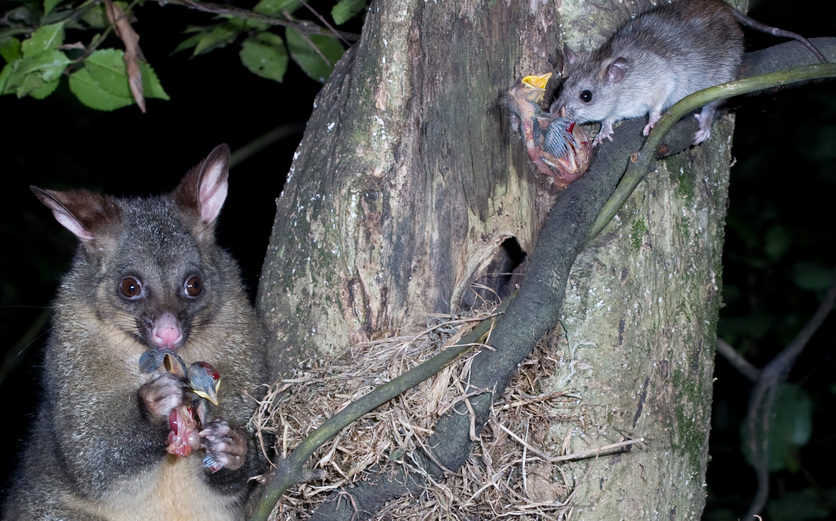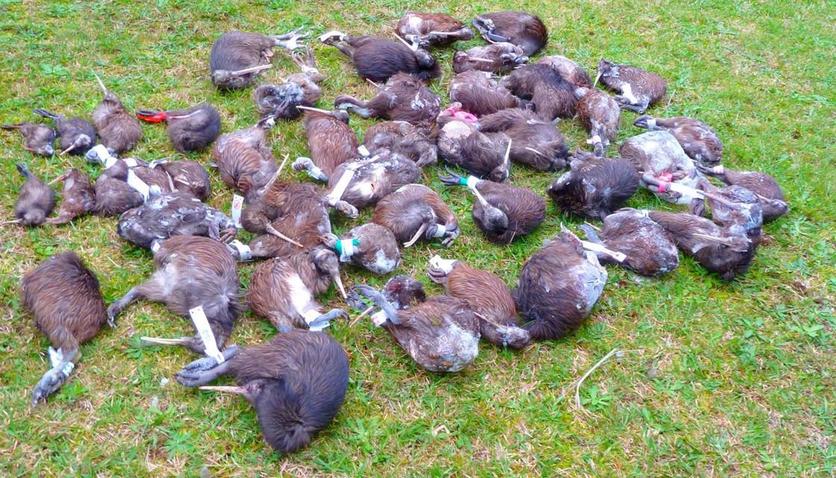Aotearoa New Zealand faces a wicked problem – do we kill introduced pests or do we allow them to kill our native animals, damage our forests and endanger our primary industries? While most New Zealanders agree that pests are a significant conservation problem, there is disagreement on how we deal with them.
1080 is one of 11 poisons the Department of Conservation uses for pest control. Aerial 1080 operations are effective – they kill up to 98% of possums and rats, while stoats die from secondary poisoning. Decades of research show that, unlike other commonly used poisons, 1080 does not contaminate water or soil, nor does it bioaccumulate.
Mistakes were made in the past. Aerial 1080 operations from the 1960s to 2000s did kill birds, dogs and deer. Advances in technology have significantly reduced the chance of bykill, and tighter regulations mean the public are better informed.
So why does opposition to 1080 appear to be growing?
I suspect the public will remain sceptical of 1080 due to its history of use in this country. This creates many issues that are not able to be resolved by scientific evidence alone.
Dr Belinda Cridge, Department of Pharmacology and Toxicology, University of Otago
1080 is a wicked problem
Wicked problems often involve a mix of environmental, social and political issues. They do not have yes or no solutions – they have outcomes that are better or worse. Wicked problems may be associated with conflicting information, emotional responses and alternative conceptions. Communal reinforcement also occurs – claims for or against something become strong beliefs through repeated assertion by members of various communities.
Classroom opportunities
Wicked problems offer rich, real-life contexts for developing students’ critical thinking and problem-solving skills, as well as their science capabilities. They are often value laden, so they present opportunities for cross-curricular student inquiry and learning, with strong links to the social science learning area.
Nature of science
Wicked problems are a valuable context in which to develop students’ scientific literacy. Being able to understand and evaluate scientific evidence helps students make informed decisions about social, scientific and political issues.
Wicked problems also offer opportunities for literacy and numeracy development. Use the following Hub articles to learn more about 1080:
- 1080 – an overview
- The chemistry of 1080
- 1080 and water quality
- 1080 and the risk to non-target species
- Alternatives to 1080
- 1080 and pest control – a timeline
Our resources and those listed in the useful links section are a starting point for developing students’ science capabilities. Here are some examples:
Use evidence
- Locate evidence from different sources to identify similarities and/or conflicting information (compare website information or media articles).
- Select and use scientific information to develop and justify arguments.
- Look for evidence of communal reinforcement in media or social media reports.
- Match or counter statements with relevant evidence (especially blanket statements like “1080 kills everything” or “1080 is safe to use”).
Critique evidence
- Check information for objectivity and/or accuracy (check the ‘about us’ tab on websites or blogs, identify the original source of the information).
- Critique the scientific approaches that underpin relevant research.
- Explore the peer-review process for scientific publication.
- Examine and/or critique media and social media reports about 1080 for features that point to pseudo-scientific arguments.
- Check arguments for logical thinking.
- Check who benefits from the information (commercial interests, hobbies, public good).
Interpret representations
- Examine graphical presentations of data used in scientific reports and across a range of websites.
- Examine photographic evidence presented by those opposed to 1080.
Engage with science
- Identify the multiple perspectives associated with the use of 1080 aerial drops. Which groups have views (for example, hunters, gatherers, fishers, dog owners and/or animal lovers)? What are their views?
- What values are represented in these views? Present arguments, with reasoning, for or against the use of 1080 aerial drops. (The Hub’s Ethics thinking toolkit might be useful here.)
- Consider the place of new technologies such as gene editing and their benefits and/or limitations.
This article provides some guidance for using a wicked problem as a starter for classroom inquiry.
Related content
Is poisoning pests the Māori way? Tame Malcolm unpacks the claims that using 1080 poison to control pests is ‘un-Māori’ – arguing that to the contrary, protecting the environment is at the heart of whakaaro Māori.
Conserving native birds – introduction looks at the issues surrounding our native birds.
The New Zealand Government has a vision of becoming predator-free by 2050.
ZEALANDIA has produced a series of resources to support schools to pursue a pest-free vision.
The Connected article Bringing back the birdsong profiles the Kids Restore the Kepler project to bring birdsong back to the Kepler Track.
The Connected article Fake facts looks at misinformation, malinformation and disinformation in the online media landscape. It also suggests strategies for evaluating whether information is based on facts and whether it is worth sharing.
RNAi might be an answer to the wicked problem of pest control. RNA interference – a context for learning provides curriculum information and pedagogical insights.
Useful links
Websites and resources supporting the use of 1080
The Department of Conservation website has a set of 1080 resources, including an article about fake 1080 news.
Dr Alison Campbell’s blog So what does the actual Science say about 1080? contains links to factual resources about 1080.
Bush Bay Action is a trapping-only operation in the Opua Forest. Read why wide-scale trapping is not feasible (practical) over large areas.
The New Zealand Veterinary Association Te Pae Kīrehe recognises that, in the absence of effective alternatives, the use of 1080 is necessary to assist the eradication of bovine tuberculosis and in conservation efforts.
Websites and resources opposing the use of 1080
Steve and Clyde Graf create videos and host blogs.
The now-disbanded Ban 1080 Party stood for elections in 2014 and 2017. Read about their party policies in this Scoop article.
Watch the Inside Operation Ban 1080 video.


